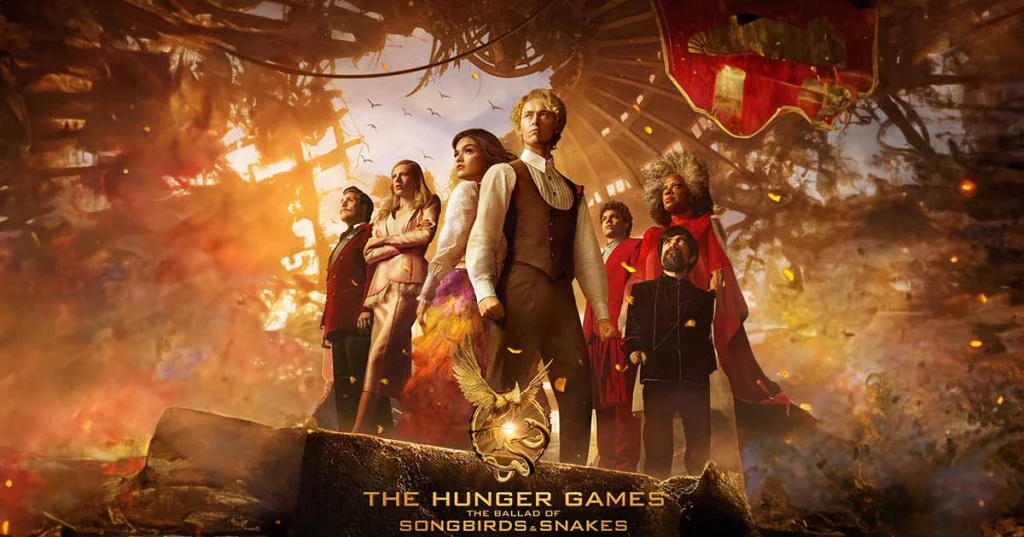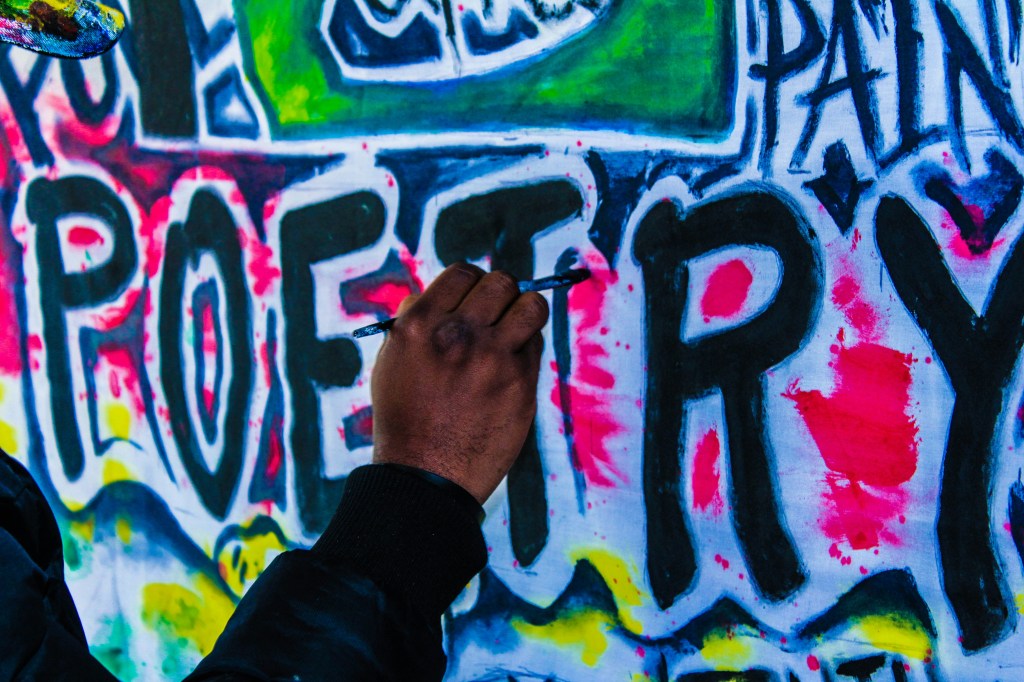An analysis of The Hunger Games: The Ballad of Songbirds and Snakes as an extension of The Hunger Games world.
Spoilers ahead.
I was one of the fans who devoured the The Hunger Games trilogy before discovering that they were adapting them. I read Catching Fire obsessively because it was such a rich setting, a wild story, and had lively characters. Needless to say, it was definitely one of the most crisp worlds I’ve ever had the pleasure of reading.
I haven’t been a fan of the recent resurgence of reboots. Every time I turn around there seems to be another show or movie from my childhood that is trying to expand into a new generation. First with Stephanie Meyer’s Midnight Sun (which I exiled to a floor corner), then Gossip Girl, Girl Meets World, Raven’s Home, How I Met Your Father, and then there were even talks of rebooting the Twilight movies, Lizzie McGuire… you get the point.
But this “reboot” was nothing like the others. Instead of unravelling the lives of characters that deserve a rest after a violent revolution, Suzanne Collins created an entirely new story that gave insight into the formation of the Hunger Games, which we learned is the formation of Panem itself.
This isn’t a story of revolution and Mockingjays. This is a story about the fallout of a country ravaged by civil war and Jabberjays.
The Ballad of Songbirds and Snakes, released on November 17, 2023, split reviews into two camps; the critics who rated it just above mediocre, and the fans who devoured everything these filmmakers were putting down.

I purchased my ticket at the Cineplex kiosk, transported back in time to 2012 in some kind of alternate reality where Taylor Swift was all I listened to and I was excited about a new Hunger Games movie. A little twist in time.
I had no expectations going into this movie. I did not read the book before (a grave sin, I am aware), and had no book bias.
We opened to a world that was familiar, but slightly different. Everything seemed newer and older at the same time. It felt like a futuristic past inspired by our own past and Panem’s future. Everything set the tone; from set design, to costumes, to casting choices. It was a world well-built.
I had no clue there would be so much beautiful music to listen to, nor the literary importance of it. The songs added a dynamic texture to the story. Singing is who Lucy Gray is. She is the Songbird, capturing audiences, and creating a musical spectacle.
The Hanging Tree parallels so beautifully in both films. A song capturing Lucy Gray’s haunting reality becomes a rallying cry of revolution in Katniss’ hands. One song evoked two distinct moods; a personal elegy for wrongfully convicted neighbours versus an ominous threat from the Districts to an oppressive Capitol government.
Every moving piece in this film rendered a world for us that resembled a more primitive version of Panem.
How did they do that?

Photo via Geek Culture.
Voice.
Voice is something that we all have. It’s the way you speak, the tone you set, the cadences you hold. Catching Fire, Mockingjay Part I, and Mockingjay Part II were all directed by Francis Lawrence who returned for the newest film. Trish Summerville also returned as the costume designer along with James Newton Howard as the composer.
The familiarity these three have is invaluable in creating the continuity of voice that was accomplished. The unique blend of Suzanne Collins, Francis Lawrence, Trish Summerville, and James Newton Howard is what invented the voice behind the Hunger Games film franchise. The power team came back swinging, and this time they had fresh ideas.
That’s what I kept thinking through the film. Everything is so fresh. Vibrant. Raw.

Photo via People.
I was so refreshed by how different Lucy Gray and Katniss are. Katniss is an awkward, introverted hunter. She is blunt and she hates any invasion of her private life. Lucy Gray is vibrant, open, and coy. She loves singing, performing, and talking to people. She doesn’t mind being the centre of attention.
Despite their differences, we cannot help but draw a parallel between these two characters. They’re both defiant tributes from District 12. They shared unique reaping experiences. Katniss volunteered for Prim and Lucy Gray put a snake down a girl’s dress and sang a song, both very much drawing attention from viewers in the Capitol.

Photo via Today.
As Haymitch says in The Hunger Games, “It’s a television show, and being in love with that boy might just get you sponsors, which could save your damn life.” These standout reapings are what allowed both Katniss and Lucy Gray to have the resources to survive.
However, their relationship to Panem is where they diverge.
In the original films, we see a Panem that has never known another way. We see Gale mouthing, “war, terrible war,” and rolling his eyes while the Panem anthem plays over the reaping. There is a sense of familiarity. But the Panem of Lucy Gray’s childhood, of her adolescence, well that was a very different time.
It wasn’t Panem at all.
She remembered a time before the war. They all did. Panem was new and fresh, and the Hunger Games resembled Roman gladiators in the Colosseum. Nowhere to run or hide, weapons out, it’s do or die.
The Hunger Games is based on a very real history. The Romans called it Bread and Circus.
“Rome’s rulers deliberately kept the populace in a complacent and inert state by continually plying them with handouts of free food and lavish, violent shows. This concept is usually expressed in shorthand by the expression “bread and circuses,” or occasionally in the original Latin version, panem et circenses“
Gregory S. Aldrete
“Bread and Circuses”: Ancient Rome, Modern Science Fiction, and the Art of Political Distraction
The very name Panem draws a parallel to the Bread and Circus phenomenon. When I dug a little deeper into these real-life Hunger Games, I realized something. In Rome, the Games served as a spectacle.

Photo via Condé Nast Traveller.
The theme of spectacle is present in every single version of the Hunger Games. In a Ballad of Songbirds and Snakes, Dr. Volumnia Gaul (Viola Davis) asks the question, “What are the games for?”
Dean Casca Highbottom (Peter Dinklage) is the charcter that truly answers this question.
The esteemed citizens of the Capitol have grown bored of the Games and simply aren’t watching anymore. And if the Games are to continue at all, there must be an audience.
Dean Casca Highbottom (Peter Dinklage) from The Hunger Games: Ballad of Songbirds and Snakes
I noticed that the Games were not actually the focus of this movie, but rather the way the Games transformed from a room of kids who killed everyone in less than an hour to a week-long event with favoured tributes. Because the Games are not actually about the tributes, it’s not about victors. It’s about the spectacle, like Bread and Circus.
Lucy Gray Baird may have been selected for the Hunger Games. But unlike Katniss, Lucy Gray is not our protagonist. Our central figure is none other than President Snow. His task was made clear by Casca Highbottom from the very first school meeting.
Snow was to become a mentor to “convince the tributes to perform for the Games.”
Keeping that in mind, we embark on a journey of a young Coriolanus Snow whose father has been condemned as a rebel. Disgraced, Coriolanus along with his cousin, Tigris, and their Grandmother attempt to survive in a post-war Capitol. With no money, and no reputation, the Snows must “land on top.”
Tigris has always been one of my favourite characters. She was a much larger character in the book Mockingjay than she was in the movie. At the time, I truly was devastated to see how little time she got on the screen, given her rich back story.
Then along came Hunter Schafer.

It was clear to me that Ms. Schafer got the assignment. Matter of fact, she’s teaching the class. Not only did she read Mockingjay, but she loved Tigris as much as I did. I know this because of the way she portrayed this character.
Tigris is whispery, soft, cat-like. Regardless of her facial appearance (which was cosmetically altered in Mockingjay), Tigris’ personality would remain as demure and playful as she was in the books. The woman I saw prancing across the screen in gorgeous robes and angular dresses is certainly fit to become a leader among Capitol fashionmongers. Even with little money, as we can see with the Tessera button she sewed onto Coriolanus’ shirt, she can turn out look after look.
Besides serving us face, poise, and fashion, Tigris served as an emotional core here, a softness within Coriolanus’ life. This would explain her exile in Mockingjay, and her willingness to help Katniss, because, President Snow isn’t the “Coryo” she remembers.
This story focuses on Snow’s development of the Games, the origin of his perspective.
When we begin with the war, it is to see how Snow suffered as a child, in violence, in poverty, an orphan. He wanted bread too, eating paste to survive during the war.
When Snow is at school, we see how affluent everyone else is compared to his family. Dean Casca Highbottom mentioned how impoverished the Snows were. Snow’s friend Sejanus Plinth, originally District 2 (reminder that 1 and 2 are “rich” districts), had “bought” his way into the Capitol. I noticed that regardless of friendship, Coriolanus continuously threw that fact in Sejanus’ face.
Snow’s obsession with money is present from the start.
The very premise of the Hunger Games assignment, the purpose behind him garnering attention around Lucy Gray, his trying to impress Dr. Volumnia Gaul, what was it all for? What was threatened by Dean Casca Highbottom?
The Plinth Scholarship.
Sejanus Plinth was a means to an end. Coriolanus recorded their conversations and passed it along to the authorities he knew would kill Plinth. Are we to believe he truly thought Sejanus could “buy” his way out of these crimes?
Money is the reason that Coriolanus even suggests creating his version of spectacle around the Hunger Games. The assignment was to convince the tributes to perform so that the audience becomes invested.
Snow inherited a primitive version of the games and was assigned to upgrade it, regardless of the cost to life, all for a scholarship.
But again, the Games were not the central focus of the film. The focus of the film, the central thesis, is:
“It’s the things we love the most that destroy us.”
Coriolanus Snow

Photo via Dexerto.
The Hunger Games are a spectacle filmed for all of Panem. Lucretius “Lucky” Flickerman (Jason Schwartzman) points out that the Districts can’t afford televisions. Dean Highbottom acknowledges that the “people of the Capitol” are bored.
When Dr. Volumina Gaul asks for the final time, “What are the games for?” Coriolanus answers:
I used to think that the Hunger Games were punishment for the districts.
Then I thought they served as a warning to us here in the Capitol about the threat the districts posed.
Now I know the whole world is an arena. And we need the Hunger Games. Every year. To remind us all who we truly are.
[…]
The victor.
The Ballad of Songbirds and Snakes
The Games are a spectacle by the victors for the victors. Coriolanus only believed these things after he killed a tribute, after he cheated to help Lucy Gray win, after he reported Sejanus, after he killed the mayor’s daughter, after he hid the guns, and after the thing he loved most broke his heart.

Photo via X.
Coriolanus was never interested in helping Lucy Gray to survive until he fell in love with her. He wasn’t interested in becoming friends with Sejanus Plinth. He was interested in getting the Plinth Scholarship.
Snow is Capitol through and through. Lucy Gray was a glimmer of hope that became a spark, and Katniss turned that rebelious spark into a flame.
Coriolanus Snow never wanted to help the tributes, despite his love of Lucy Gray, he wished to have a life with her in the Capitol. But in the end, she couldn’t trust him because the Capitol would always stand between them. He was too deep into the Games, into the Peacekeepers, and ended up creating the very basis on which the rest of the Hunger Games were made.
Dean Casca Highbottom regretted coming up with the Games, he understood that it was a horrible crime, and he tried to stop them. But Coriolanus took his broken heart and shot bullets into the sky.
Lucy Gray was a catalyst for a problem Snow faced; heart or duty. He chose heart at first, and when Lucy Gray couldn’t trust him, he turned against her and shot at her.
He was the victor. The only person alive who knew about the guns. The only person who knew he killed the mayor’s daughter. His need for power, for status, for money, it bled into everything he touched.
He found a way to keep the Capitol engaged in the games.
Snow created a spectacle for all of Panem to watch. He could not sway from his true nature. He could not part from his patriotism.
Snow landed on top. But at the cost of thousands of innocent lives.
All for the sake of victory.
Featured image via Koimoi.




Leave a comment